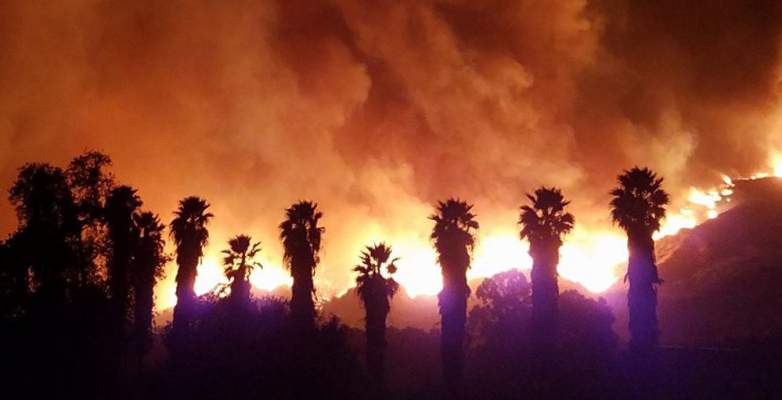If you or a loved one lost their home to the Thomas Fire, the team here at H.W Holmes, Inc. understands what a surreal and difficult time this must be. Our hearts are with everyone affected by what’s now the largest of California wildfires. The visuals of the fire, as well as the destruction left in its aftermath, will forever stay with us. If you are currently in the process of trying to rebuild your home, please know that we are here to help answer any questions you may have. We want to help you move forward with your life after this horrific ordeal. Several of our blog posts this month will specifically address fire damage restoration and rebuilds and how to navigate through this difficult period. Today, we begin with demystifying the insurance claims process. Specifically, three of the most prevalent insurance-related issues arising from structural damage due to wildfires.
Insurance Policy Limit Is Insufficient
While a wildfire is a covered peril in most homeowners insurance policies, there’s more to the story. Some home or business owners in the Ventura area are discovering that their insurance policy’s dwelling limit doesn’t cover the full cost of a rebuild. Unfortunately, most structures are insured at either actual cost or replacement cost value, not extended or guaranteed replacement cost. The latter is where an extra premium is paid to prevent a situation where you’re underinsured.
An actual cash value policy generally covers up to dwelling’s fair market value at the time of loss or its initial cost minus depreciation, whichever is less.
A replacement cost policy covers the cost to rebuild the exact same or similar structure in today’s market regardless of any depreciation. In a situation like we’re in post-Thomas Fire, these replacement dollars can be stretched thin with the cost of materials and labor locally soaring.
Guaranteed or extended replacement cost policies offer the most protection, but are also the costliest.
The guaranteed replacement cost pays the cost to rebuild exactly as it was before a fire or any other peril, even if that cost exceeds the home’s estimated value. This protects the policyholder from the previously mentioned increases in materials or construction costs.
Certain insurance companies may also offer an extended replacement policy, which extends coverage an extra 20% to 25% beyond the actual replacement value.
If you believe your insurer, agent, or broker underestimated the cost of rebuilding your home when setting your policy’s dwelling limit, it’s not a bad idea to speak to an attorney to determine if they could be held liable for underinsurance and the shortfall you’ve encountered following California wildfires.
Personal Property Has Been Damaged/Destroyed
Most home insurance policies and endorsements cover personal property damaged or destroyed by fire.
Once you make a claim for personal property losses, your insurer will typically ask you to complete a sworn proof of loss and/or personal property. It’s then time to provide an inventory of any damaged possessions. This is the most difficult and time-consuming part of a fire claim.
While it’s, unfortunately, a little too late for those impacted by the Thomas Fire, it’s wise to periodically use your smartphone to shoot a video where you walk through your home and document your belongings. This is good to have on hand as helpful evidence if there’s ever an insurer dispute.
Most insurers will usually initially pay out the actual cash value – or fair market value – of the property using depreciation schedules. This will typically get you a pay out a little greater than what you’d get for selling the item.
You generally have 24 months to replace your personal belongings. Provide a receipt to your insurer for any replacement item purchased to receive the difference between its cost and what the insurer paid out.
Additionally, if you evacuate and relocate, be sure to save receipts for hotel rooms, food, and rentals since many homeowners policies include ALE (Additional Living Expense) coverage.
Ash & Smoke Damage
If your home didn’t burn down, but you’ve had significant smoke, soot and ash damage, it should still fall within the fire damage coverage of most California homeowner policies. Soot and ash from wildfires can pose significant health risks; necessitating a need for removal by a professional remediation company. Be sure to speak with an attorney if your insurance company tries to impose any sub-limit (ie: such damage could be cleaned in one day by a few maids rather than a remediation service) as it’s illegal for them to do this.

